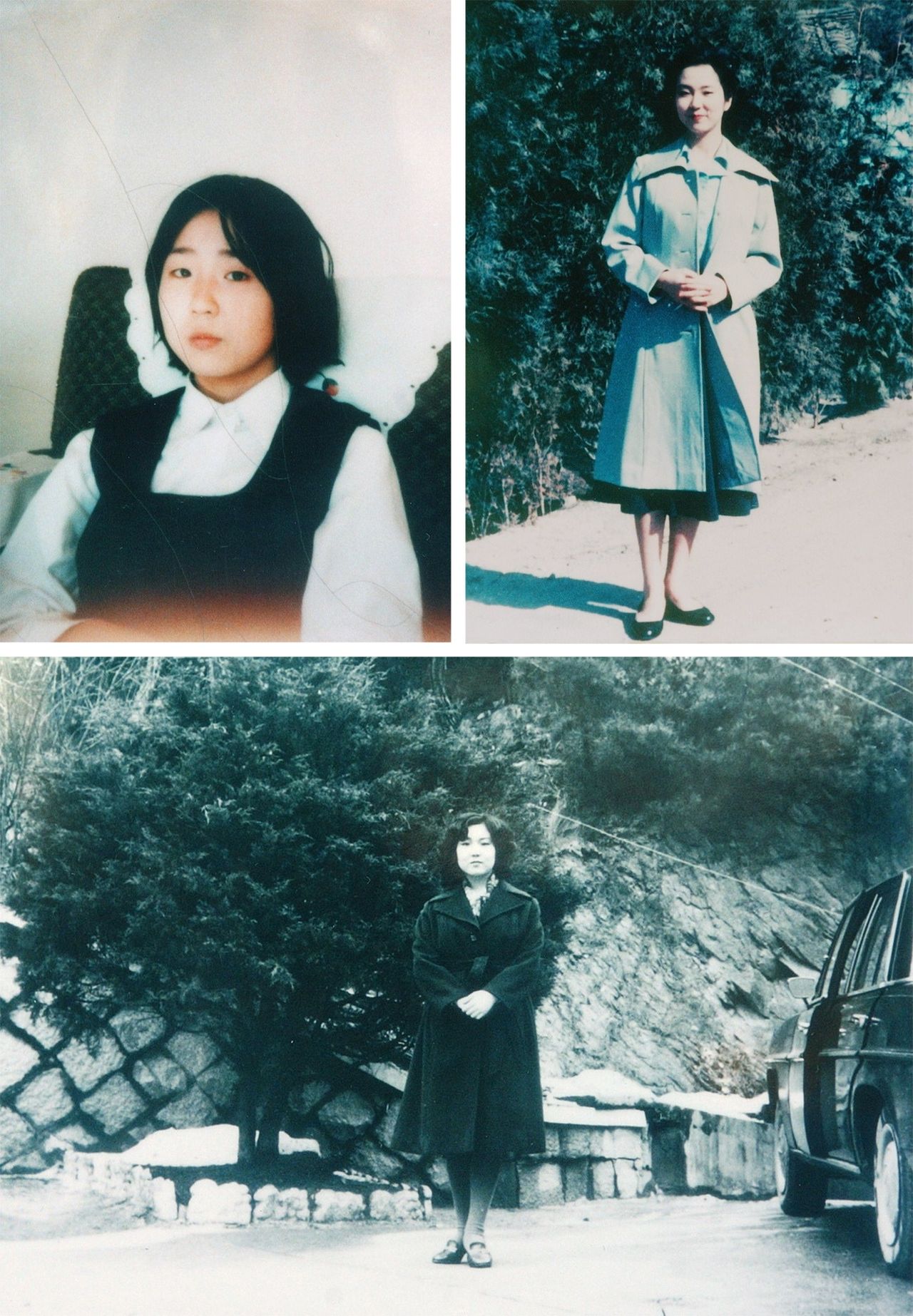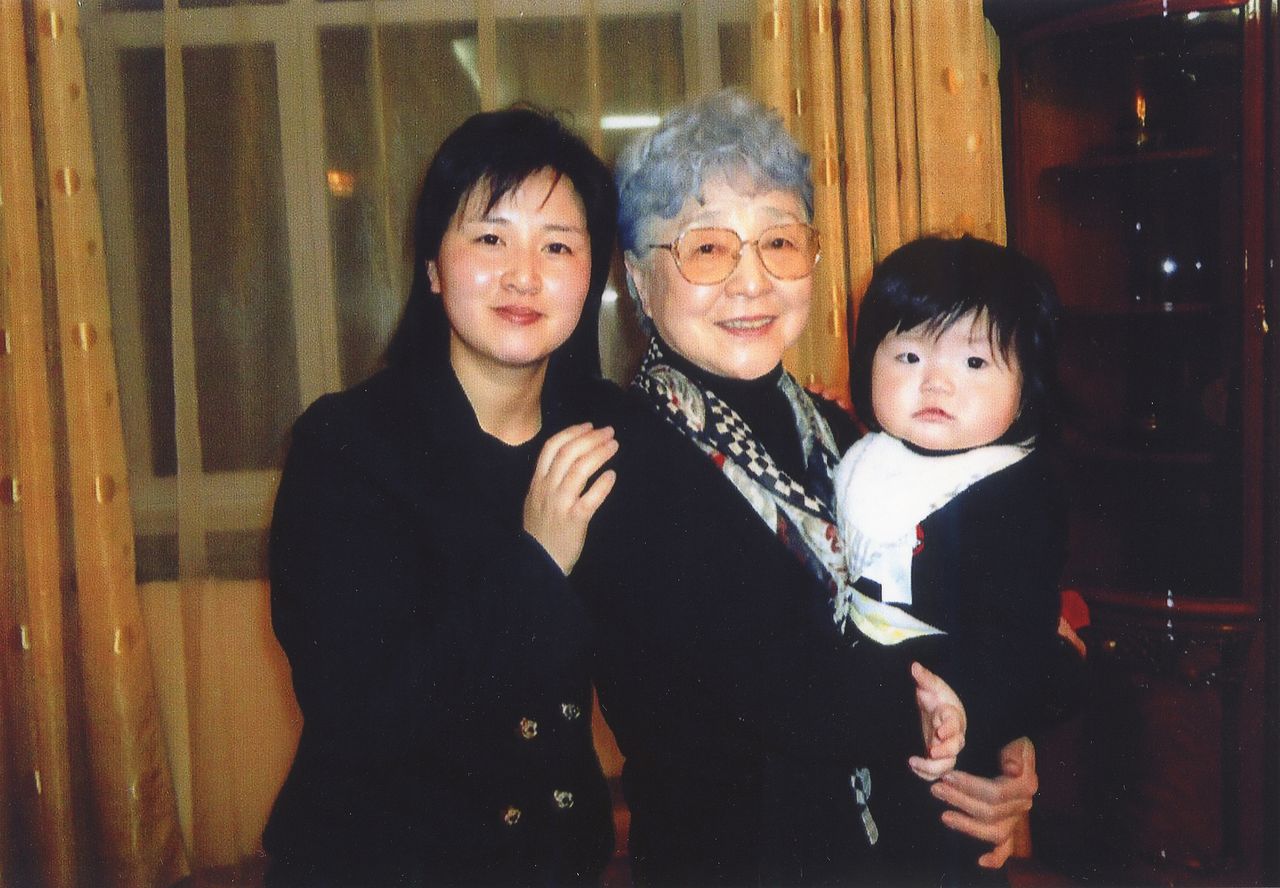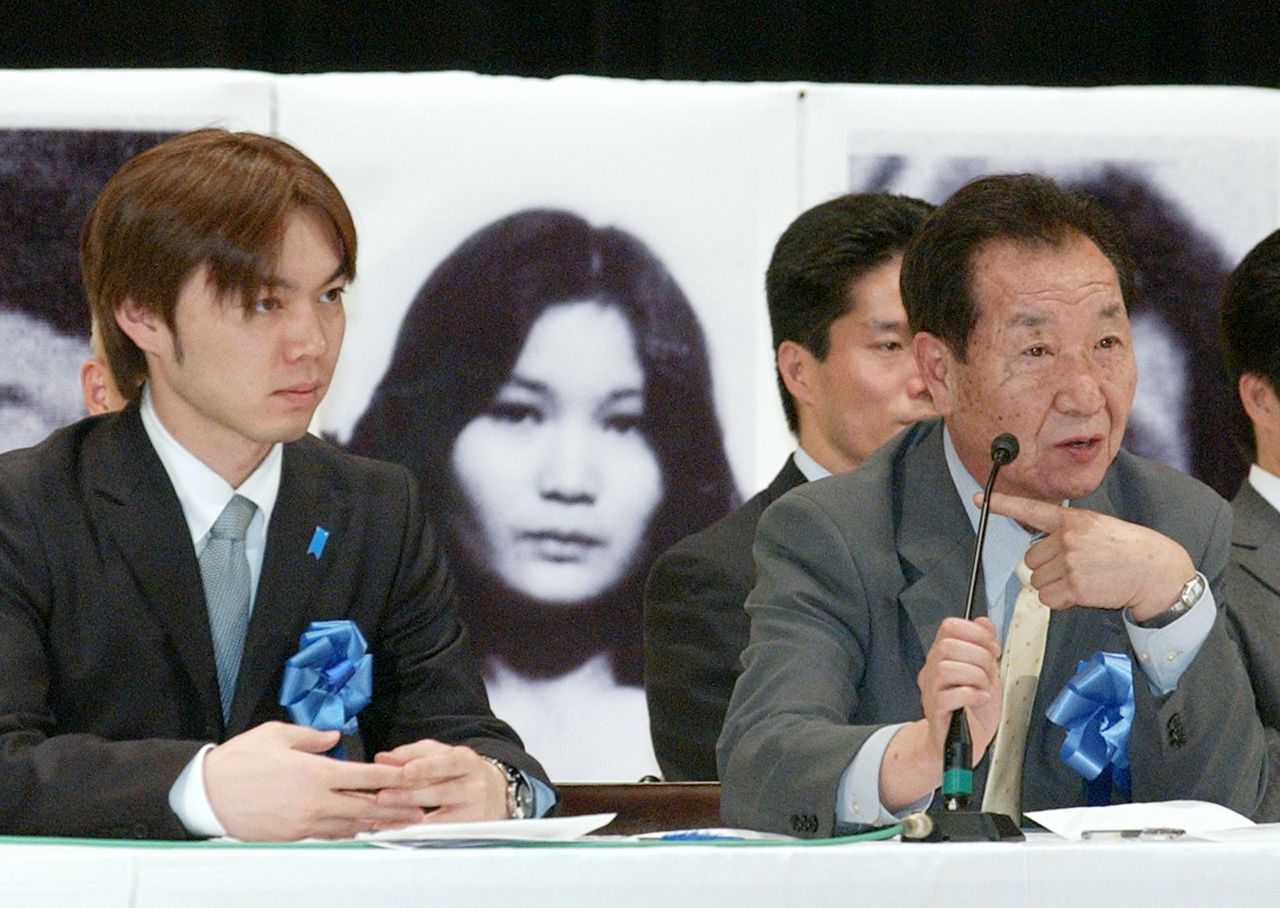
No Resolution for the North Korean Abductions
Fate Unknown: North Korea Abductee Yokota Megumi’s Parents’ Efforts and Suffering
Politics Society Family- English
- 日本語
- 简体字
- 繁體字
- Français
- Español
- العربية
- Русский
Spirited Away? Megumi’s Sudden Disappearance
November 15, 1977, was supposed to be an ordinary, uneventful day for Yokota Megumi, a 13-year-old seventh grader. Megumi had breakfast with her family, headed off to school, and attended her classes as usual. However, on her way home from badminton practice, Megumi disappeared without a trace. It was as if she had been spirited away to another world.
The police searched frantically for the normally cheerful and energetic junior high schooler. Various possibilities were considered: an accident? A kidnapping? Had Megumi run away from home? Her heartbroken parents, father Shigeru and mother Sakie, continued searching the nearby shore for clues. If an unidentified body was discovered along the Sea of Japan, the Yokotas would inquire whether it was Megumi—but it never was. In the book Megumi e no yuigon (Last Words for Megumi), written by the journalist Ishidaka Kenji based on interviews with the Yokotas, Sakie admitted being driven to desperation and spending most of her days thinking about death.
A TV Investigation Triggers Fresh Interest
It was not until the 1990s that new information uncovered by Ishidaka, then a producer in the Asahi Television Broadcasting Corporation’s news bureau, triggered heightened public awareness. Ishidaka had been investigating and reporting on the disappearance of many Koreans who had returned “home” in the North Korea–facilitated “Repatriation Program” of the late 1950s. The more he investigated this issue, the surer he became that North Korean agents had also abducted Japanese nationals.
In 1995, TV Asahi broadcast the documentary “Dark Seas: North Korea’s Secret Operations against the South.” The program reported on the 1980 abduction of Hara Tadaaki, a cook at a Chinese restaurant in Osaka. Sin Kwang-su, a well-known North Korean spy, had facilitated Hara’s abduction and later assumed Hara’s identity. Sin engaged in espionage in Japan and throughout Asia until his capture by the South Korean authorities in 2014.
In February 1995, Ishidaka discovered that Kim Kil Uk, an accomplice of Sin, had been released on parole. Ishidaka went straight to Jeju Island to interview Kim. While openly weeping on the side of the road, Kim admitted that he had abducted Hara. The documentary asserted that there was little doubt that at least 13 Japanese nationals had been abducted by North Korea, including three couples who went missing from the coastline of the Sea of Japan and Arimoto Keiko, who disappeared while studying in London.
However, Ishidaka himself said that the program did not immediately move the needle on the issue:
Despite the nationwide broadcast of the documentary, few media organizations touched the issue. Neither did the Japanese government show much interest. However, an editor from another company who saw the program recommended that I write a book on the topic, and I continued investigations on my own. I soon obtained information that a seventh-grade girl had been abducted in the 1970s and was still alive in North Korea. This information came to us through a North Korean agent who defected and told the South Korean intelligence authorities.
It was not until January 1997 that this girl was identified as Yokota Megumi. The year before, Ishidaka had written an article for a South Korean magazine in which he first mentioned information about the abduction of a girl. Megumi’s case then rose to the surface and caught Ishidaka’s attention.
Yokota Shigeru was initially skeptical about Ishidaka’s story. However, one crucial detail stood out: the abducted girl was described as a “twin sister.” Megumi has a twin brother, but it had never been publicly reported that the Yokota siblings were actually twins. In Last Words for Megumi, Sakie reported that when she and her husband finally met with Ishidaka, she could not stop her whole body from shaking.
Public Interest Rises with Launch of Family Association
When Megumi’s abduction by North Korea finally became public knowledge, Ishidaka called on family members of abductees all over Japan to form a group. In March 1997, the Association of the Families of Victims Kidnapped by North Korea, or AFVKN, was established. Yokota Shigeru headed the organization, and in August of the same year 500,000 signatures were submitted to the Prime Minister’s Office urging the government to investigate the abductions further. After that, the Japanese media also began to give extensive coverage to the issue.
By this point there was already ample evidence that North Korea was responsible for the abductions. However, North Korea continued to maintain that the accusations and evidence were fabricated.
Prime Minister Koizumi Jun’ichirō’s Pyongyang visit on September 17, 2002, completely changed this situation. Kim Jong Il acknowledged North Korea’s involvement in the abductions and apologized. Five victims were returned to Japan immediately, followed soon after by the children of some of these victims.
However, Megumi was not one of them. North Korea reported that of the 13 abductees that Japan had officially recognized, eight, including Megumi, were dead and one had not entered North Korea. The other four returned to Japan together with Soga Hitomi, whose existence was revealed to Japan by the North Korean government in 2002.

Photos of abductee Yokota Megumi in North Korea provided by Yokota Shigeru. (© Jiji)
North Korea’s official explanation was that Megumi had committed suicide after marrying and having a child with Kim Yong Nam, a South Korean national who had moved to North Korea. The shocked Shigeru nevertheless attended the press conference and spoke as the representative of the families:
The news about Megumi is unfortunate. I was told that she married and had a girl. But North Korea had insisted up until now that there had been no abductions. So, I can’t believe them. But we hope that the families who found out that their relatives are alive will not hesitate to rejoice with us.
There was still reason to hope, though. The eight death certificates provided by North Korea turned out to be fabricated. Ishidaka explains:
The death certificates were hastily prepared in 2002 in response to the visit of a Japanese government survey team. There were many unusual details. For example, the same hospital confirmed all eight deaths despite the time and place of each death being different. In addition, North Korea initially claimed that Megumi died in 1993. However, according to the testimony of the returned abductees, she was still alive at some time after that year. So, North Korean quickly revised the death certificate to say that she had died in 1994. These suspicious actions suggest that Megumi is still alive.
The AFVKN demanded more answers, and the Japanese government in turn demanded that North Korea reopen the investigation. In November 2004, North Korea provided the Japanese government with Megumi’s purported remains and photographs of her that Kim Yong Nam had kept. However, Japanese testing of the remains revealed that the DNA did not belong to Megumi. The Japanese government insisted that these were the remains of a different person.
It has also been pointed out that burial is the standard in North Korea, and that it would be strange if Megumi was cremated. North Korean officials explained that Kim Yong Nam dug up and cremated Megumi’s remains three years after her death and kept them at his home. This is a very unnatural, if not bizarre, action to take.
What Prevents Megumi’s Return?
Why would North Korea persist in hiding the truth about Megumi? There is information to suggest that she was responsible for teaching Japanese to the children of North Korean leader Kim Jong Il, who died in 2011. If so, it is possible that Pyongyang does not want to reveal the whereabouts and existence of Megumi because she knows too much about the “top secret” Kim family’s internal affairs.
Megumi’s daughter, Kim Eun Gyong, still resides in North Korea today. In 2002, the then 15-year-old Eun Gyong bawled her eyes out while telling Japanese media that she wished her grandparents could one day come to see her. In March 2014, Shigeru and Sakie finally got to meet Eun Gyong in Ulaanbaatar, Mongolia. She brought her own 10-month-old daughter with her, and the Yokotas were able to spend five days together with their granddaughter and great-granddaughter.

Sakie holding her great-grandchild in her arms. (Courtesy of Arita Yoshifu; © Jiji)
Ishidaka insists there is no convincing evidence of Megumi’s death, while her whereabouts remain unknown to this day:
Shigeru strongly believed that his beloved daughter is alive and dreamed of the day Megumi would return to Japan. Shigeru remained active in the family association but died in 2020 before a family reunion could take place. We can only imagine the disappointment he must have felt coming to the end of his life without seeing any progress, thanks to politicians who were brave with their words but lacked the strength to act.
In February 2023, Sakie turned 87—the same age at which Shigeru died. Sakie is suffering from poor health and frequently visits the hospital. In May this year she told reporters of a recent incident at home where she suddenly had severe heart palpitations, and her vision went completely white. At that time, she prayed, “God, please give me the strength to go on a while longer.” Sakie still believes that a resolution is possible, saying “my desire to get back Megumi is the thing that keeps me going.”
The time left for all the abductees’ families dwindles by the day. Taguchi Yaeko’s older brother, Iizuka Shigeo, initially took over the leadership of the AFVKN from Shigeru. However, he too passed away not long afterward in December 2021. Taguchi’s eldest son, Iizuka Kōichirō, expressed his hope at a recent press conference that the Japanese government would make serious efforts to bring his mother home.

Iizuka Kōichirō (left) was raised as the child of Taguchi Yaeko’s brother Shigeo (right) after his mother was abducted. In the background of this April 2005 photo is an image of Yaeko. (© Jiji)
In May 2023, Prime Minister Kishida Fumio spoke at a meeting on the abductions, stating that “Now is the time to take bold action to change the present situation” and that “Japan will press forward proactively, engaging in high-level consultations . . . to bring about summit-level talks” with the North Korean side. However, no concrete moves have yet been made. It is doubtful that anything can be achieved through simple slogans—the prime minister’s skills will truly be put to the test if he is to make any progress.
Next year, Megumi, who was 13 years old when she was abducted, will turn 60. Nearly a half century since the abductions began, it is clear that the suffering of the families has been too cruel.
(Originally published in Japanese. Reporting and text by Nishioka Yukifumi and Power News. Banner photo: Yokota Sakie being interviewed before the three-year anniversary of her husband Shigeru’s death in Kawasaki, Kanagawa Prefecture, on May 30, 2023. © Jiji.)